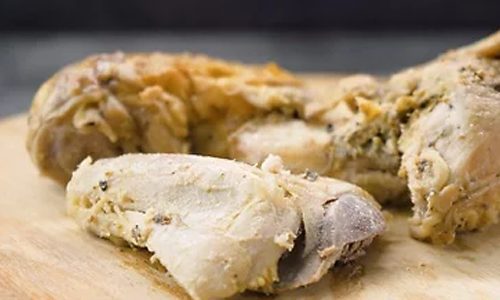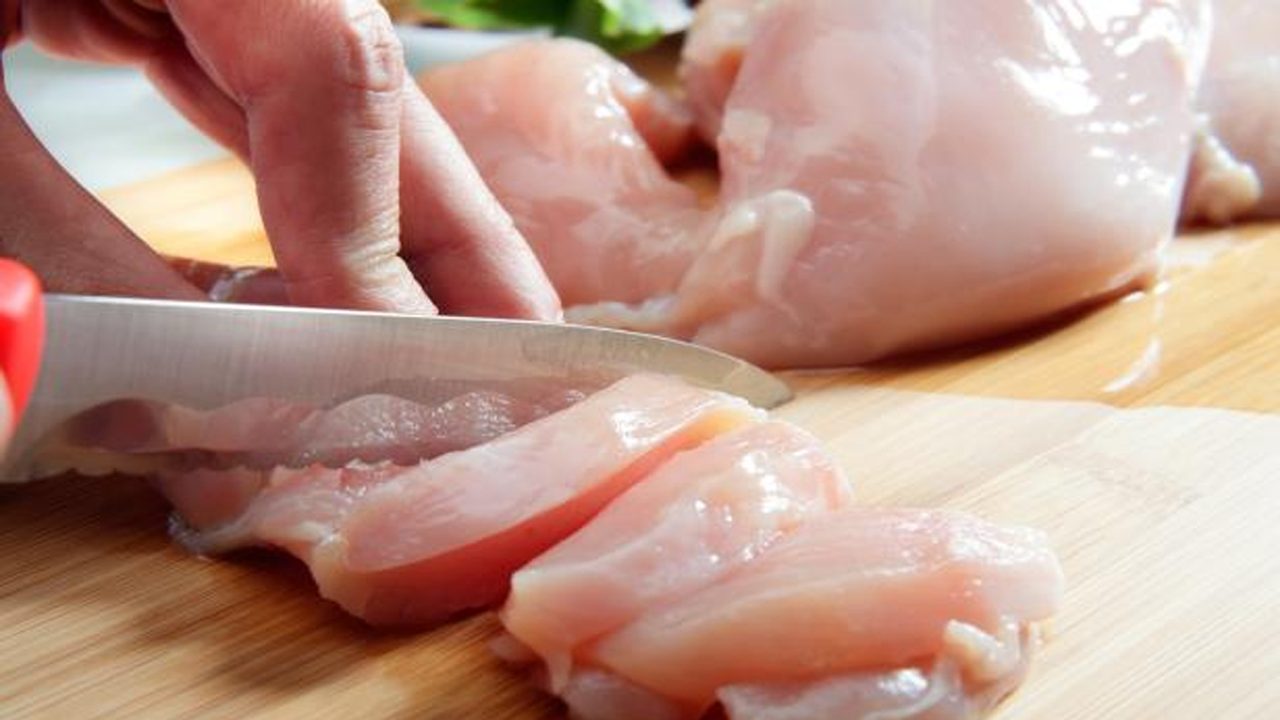If we are not careful with our meals, particularly chicken, anyone can get food poisoning. It is unpleasant to spend time preparing a whole chicken to discover that the raw meat has spoiled. It implies that much food will be wasted.
Fortunately, there are several ways to tell if a chicken is terrible or if your chicken is still safe to consume. These include examining the chicken for signs of aging, smelling out strange odors, touching the meat for slime, and recalling the date of purchase.
According to the Centers for Disease Control and Prevention, forty-eight million individuals become ill from a foodborne disease every year.
There are a few techniques to determine whether the chicken is terrible and how to guarantee to eat high-quality chicken.
1. Smell
An unpleasant scent is a telling symptom of rotten chicken. Fresh, raw chicken will either have no fragrance or very little.

Discard your chicken if it smells strongly of anything, like rotting eggs or something bitter or sulfurous.
To assess if the chicken is safe to consume, you should always rely on something other than the scent. Only some people will detect a difference in chicken aroma since each person’s sense of smell is unique. So keep an eye out for different indicators of rotting.
2. Expiration Date
Check somewhere at the “best by” date printed on the container. It’s preferable to throw away the chicken than risk becoming sick if you’re much past that date because it’s probably not safe for consumption.
The “best by” date is only one of the timelines you should know. Generally speaking, raw chicken should be stored in the refrigerator for up to two days.
The U.S. Food and Drug Administration and the USDA both state that a chicken’s expiry date changes depending on whether it has been cooked.
3. Raw Chicken
Check the “use by” date on the packaging before you leave the grocery store.

According to the USDA, this date isn’t an expiry date; instead, it marks the point at which the chicken starts to lose its “peak quality.”
Therefore, the chicken may be used up to two days later. Pay attention to additional sensory cues if the chicken has gone wrong after two days.
4. Cooked Chicken
Place the chicken in the refrigerator to chill down as rapidly as possible when it is finished cooking. Name and date your storing box to determine when the chicken expires.

Once cooked, consume it three to four days later; otherwise, throw.
5. Texture
The texture of the raw, fresh chicken is shiny and a little soft. It must not have a slimy, tacky, or sticky texture. After handling raw chicken, the chicken will go rotten if your hands come away with a sticky residue.

Compared to raw chicken, cooked chicken is firmer and drier. It’s no longer safe to consume if you detect textural differences, such as a rise in softness, sliminess, stickiness, or residue.
6. Appearance & Color

There are a few essential variations between raw and cooked chicken in terms of look and color.
Raw Chicken
- Before cooking chicken, inspecting it for rotting symptoms is essential.
- White fat bits and a light pink should be present in raw chicken. You must throw away the chicken if the meat is grey, green, or yellow.
- These are signs of deterioration. But even minor color changes in the chicken’s meat are OK.
- For instance, you could notice a slight fading or darkening of the pink flesh, typical when oxymyoglobin, a red protein, and pigment, changes into metmyoglobin when oxygen interacts.
- This may be a sign that the chicken could be fresh, but it’s not typically a sign that it has degraded. A slight color change is typical as the chicken is appropriately kept in the fridge or freezer.
- Lastly, dispose of the chicken if there are any apparent symptoms of deterioration, such as mold development.
- The entire piece or batch of chicken should be thrown out since, unlike hard cheese, you can’t merely snip off a little bit where mold growth has developed.
Cooked Chicken
Cooked chicken shouldn’t have pink meat; it must be white. The heart of the undercooked chicken will be pink. Chicken remains should be stored in the refrigerator for over three days in a container at 40°F (4°C).
Once preparing or eating, make sure to immediately place the chicken in the refrigerator since it can deteriorate if left out in the “danger zone” of 40°F (4°C) to 140°F (60°C) for an extended time. In this temperature range, germs multiply rapidly, and the chance of contracting a foodborne disease rises.

When the chicken is placed in the refrigerator and when you want to consume it, look for any apparent symptoms of mold development or color changes and toss the chicken away.
If the chicken has any spices or dressings, detecting mold or color changes may be challenging. For this reason, you must consume the chicken within three days of preparing it.
Use a food thermometer to check the internal temperature of the chicken as it is being reheated to ensure it reaches a minimum of 165°F (74°C).
7. Strange Growth
Examine your chicken for any bacterial signs. When you spot mold, the food has now degraded. You might still be exposed to illness even if you only remove the mold-infected pieces. Mold indicates that something has gone wrong, and it needs to smell a little.
FAQs
Why is it important to check if the chicken is terrible before eating it?
Eating sour chicken can lead to food poisoning, which can cause nausea, vomiting, diarrhea, and other symptoms. It’s essential to check if your chicken is fresh and safe to eat to avoid getting sick.
How long does raw chicken last in the refrigerator?
Raw chicken can last for up to 2 days in the refrigerator. It’s important to cook or freeze it before then to ensure it’s safe to eat.
What are some signs that raw chicken is sour?
Some signs that raw chicken is terrible include a foul odor, slimy texture, or discoloration. If the chicken feels sticky or has a greenish tint, it’s best to discard it.
What are some signs that cooked chicken is terrible?
Some signs that cooked chicken is bad include a sour smell, slimy texture, or mold growth. If the chicken feels slimy or has a sticky texture, it’s best to discard it.
Can you still cook chicken that has gone bad?
It’s not recommended to cook chicken that has gone bad, as the bacteria present in the meat can still cause illness even if it’s cooked. It’s best to discard chicken that has gone bad to avoid any risk of food poisoning.
Can you freeze the raw chicken to make it last longer?
You can freeze the raw chicken to make it last longer. Raw chicken can be stored in the freezer for up to 9 months. Store the chicken in an airtight container or freezer bag to prevent freezer burn.
Can you tell if the chicken is wrong just by smelling it?
Sometimes, you can tell if the chicken is wrong just by smelling it. If the chicken has a foul odor, it’s likely gone bad and should be discarded.
What temperature should chicken be cooked to?
Chicken should be cooked to an internal temperature of 165°F (74°C) to ensure it’s safe to eat. Use a meat thermometer to check the temperature at the thickest part of the chicken.
What are some safe cooking practices for chicken?
Some safe cooking practices for chicken include washing your hands and all surfaces that come into contact with raw chicken, cooking chicken to the proper temperature, and storing chicken properly in the refrigerator or freezer.
Can I use chicken that has passed its expiration date?
Using chicken that has passed its expiration date is not recommended, as it may have already gone wrong. Always check the chicken for signs of spoilage before using it, and if in doubt, it’s best to discard it to avoid any risk of food poisoning.
